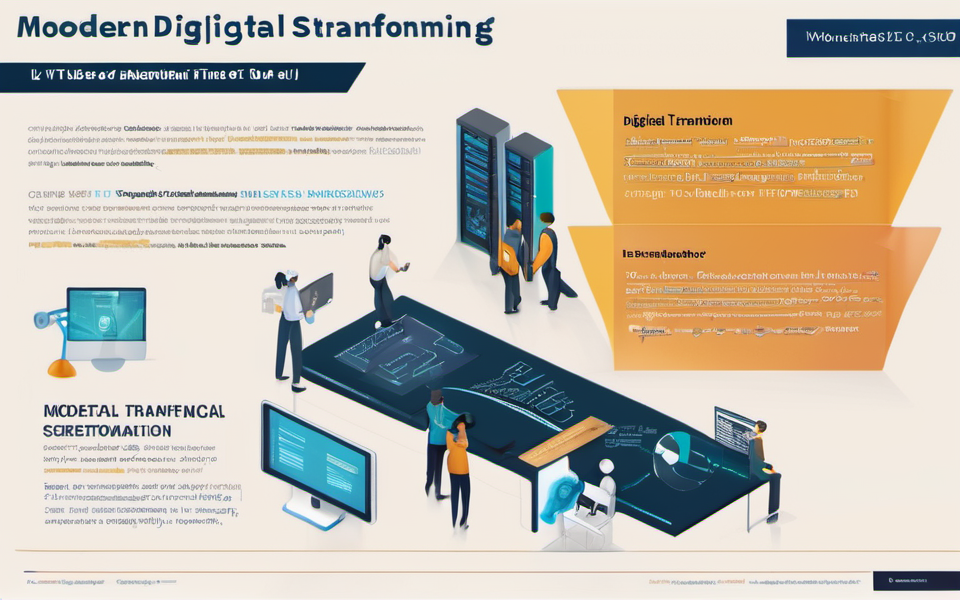Forget everything you thought you knew about security. The digital world is evolving faster than ever, and with it, the threats we face are becoming increasingly sophisticated. Cybersecurity is no longer just about firewalls and antivirus software. It’s about adopting a holistic approach that adapts to the ever-changing landscape of technology. In the era of digital transformation, companies need to embrace innovative technical solutions that are not only robust but also agile, proactive, and adaptive.
The Evolution of Cybersecurity
Let’s rewind a bit. Just a decade ago, the primary focus was on protecting on-premise data and infrastructure. We were primarily concerned with preventing external attacks from malicious actors. But today, things are drastically different. The rise of cloud computing and mobile devices has dramatically expanded the attack surface and blurred the lines between the physical and digital world.
The New Era of Digital Risks
We now face a new breed of security threats that can be both external and internal. Consider the following:
- Advanced persistent threats (APTs): Highly sophisticated, well-funded attackers that use sophisticated techniques to bypass traditional defenses and remain undetected for extended periods.
- Ransomware attacks: Exploiting vulnerabilities to gain access and encrypt data, demanding a ransom for its decryption.
- Data breaches: Theft of sensitive information, including financial data, intellectual property, and customer records, resulting in financial losses and reputation damage.
- Insider threats: Employees inadvertently or deliberately causing harm, including accidental data deletion, unauthorized access, or malicious data exfiltration.
The Key Pillars of Modern Cybersecurity
To counter these growing threats, security needs to evolve. It’s no longer enough to simply protect the perimeter. Instead, we need to embrace a multi-layered approach, incorporating defense in depth across multiple levels:
1. Strong Security Foundations
- Data security policies: Establish clear guidelines for data access, usage, storage, and protection.
- Network security: Secure internal networks and endpoints using firewalls, intrusion detection systems, and anti-malware solutions.
- Endpoint security: Implement security measures on laptops, desktops, mobile devices, and other endpoints to prevent unauthorized access and malware infection.
- Identity and access management (IAM): Ensure only authorized users have access to critical systems and data through strong authentication and authorization controls.
2. Continuous Security Monitoring and Threat Detection
- Security information and event management (SIEM): Collect and analyze security data from various sources, providing insights into potential threats and incidents.
- Security orchestration, automation, and response (SOAR): Automates incident response processes and orchestrates workflows to improve efficiency and reduce response times.
- Threat intelligence: Analyze current security threats and attack trends, helping organizations proactively identify and mitigate potential risks.
- Vulnerability management: Identify and address vulnerabilities in software, hardware, and networks, preventing exploitation by attackers.
3. Secure Development Practices
- DevSecOps: Incorporate security practices into the software development lifecycle, from the initial planning stage through testing and deployment.
- Code security: Employ automated tools to identify vulnerabilities in code and enforce secure coding standards.
- Penetration testing: Simulate attacks to identify security weaknesses in systems and applications before attackers exploit them.
- Software updates: Regularly update software to patch known vulnerabilities, keeping systems secure.
Beyond Technology: The Human Factor
It’s critical to remember that cybersecurity is not just about technology; it also involves people and processes. It’s crucial to establish a strong security culture that prioritizes data protection, employee training, and responsible online behavior. This includes educating employees on identifying phishing attacks, implementing secure password policies, and adhering to security guidelines when using company devices and accessing online services.
Future-Proofing Security with Cutting-Edge Technical Solutions
The landscape of cybersecurity is constantly evolving, and organizations need to adapt to stay ahead. Here’s how:
- Artificial intelligence (AI): AI is revolutionizing cybersecurity by automating tasks, detecting suspicious activity, and identifying unknown threats in real time. This enables proactive rather than reactive security measures, helping prevent breaches before they occur.
- Blockchain technology: Provides an immutable ledger that can be used for securely storing and sharing sensitive data, preventing unauthorized access and modification.
- Cloud security: Organizations should opt for cloud providers with robust security protocols and controls.
- Zero Trust security: A model that assumes no user or device can be trusted by default, enforcing strict authorization and verification mechanisms before granting access.
- Security awareness training: Investing in comprehensive security training programs for employees at all levels helps develop a security-conscious workforce and reduce human error.
Key Takeaways
The world of cybersecurity is constantly changing. We’ve come a long way from simply protecting our network perimeters. To succeed in this evolving digital landscape, we need to embrace a holistic, proactive approach by incorporating cutting-edge technologies, fostering a strong security culture, and adopting a zero-trust mindset. By proactively protecting ourselves, we can safeguard our data, our businesses, and ultimately our future.




